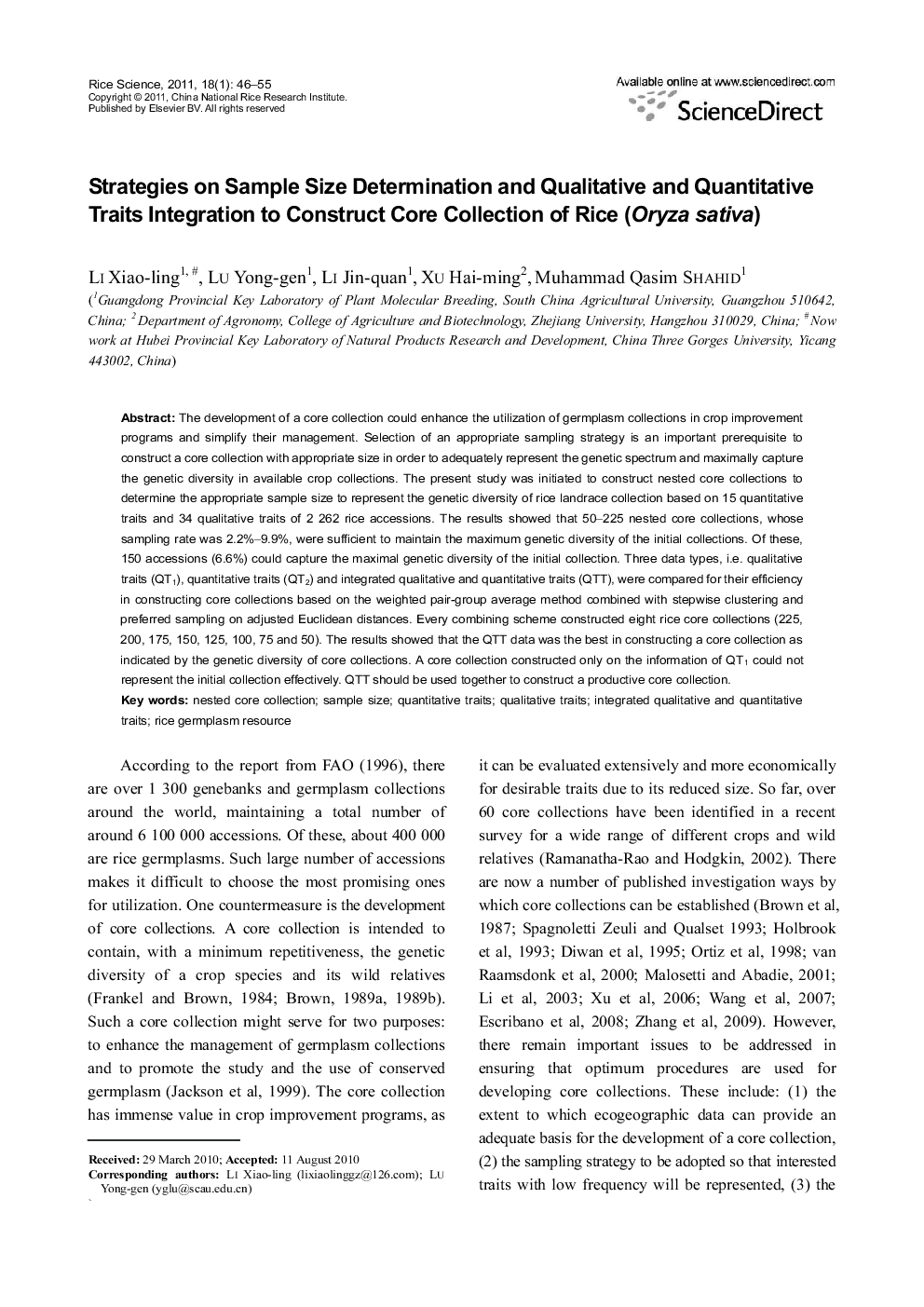| Article ID | Journal | Published Year | Pages | File Type |
|---|---|---|---|---|
| 4502129 | Rice Science | 2011 | 10 Pages |
The development of a core collection could enhance the utilization of germplasm collections in crop improvement programs and simplify their management. Selection of an appropriate sampling strategy is an important prerequisite to construct a core collection with appropriate size in order to adequately represent the genetic spectrum and maximally capture the genetic diversity in available crop collections. The present study was initiated to construct nested core collections to determine the appropriate sample size to represent the genetic diversity of rice landrace collection based on 15 quantitative traits and 34 qualitative traits of 2 262 rice accessions. The results showed that 50–225 nested core collections, whose sampling rate was 2.2%–9.9%, were sufficient to maintain the maximum genetic diversity of the initial collections. Of these, 150 accessions (6.6%) could capture the maximal genetic diversity of the initial collection. Three data types, i.e. qualitative traits (QT1), quantitative traits (QT2) and integrated qualitative and quantitative traits (QTT), were compared for their efficiency in constructing core collections based on the weighted pair-group average method combined with stepwise clustering and preferred sampling on adjusted Euclidean distances. Every combining scheme constructed eight rice core collections (225, 200, 175, 150, 125, 100, 75 and 50). The results showed that the QTT data was the best in constructing a core collection as indicated by the genetic diversity of core collections. A core collection constructed only on the information of QT1 could not represent the initial collection effectively. QTT should be used together to construct a productive core collection.
